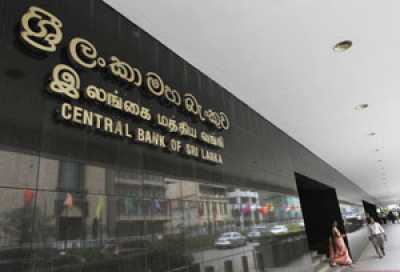February, 15, 2018

Considering the recent developments in the domestic and international macroeconomic environment, the Monetary Board, at its meeting held on 14 February 2018, was of the view that the current monetary policy stance is appropriate and decided to maintain the policy interest rates of the Central Bank of Sri Lanka at their present levels.
The decision of the Monetary Board is consistent with the objective of maintaining inflation at mid-single digit levels over the medium term and thereby facilitating a sustainable growth trajectory. The rationale underpinning the monetary policy stance is set out below.
Policies adopted by the Central Bank and the government have helped stabilise the economy. By end 2017, both the growth of broad money supply and the growth of credit extended to the private sector by commercial banks moderated to desired levels. In the external sector, export earnings reached an all-time high of around US dollars 11.4 billion in 2017, largely supported by the sustained increase in export earnings stemming from the restoration of the GSP+ facility by the European Union, favourable prices for key commodities in the international market and the flexible exchange rate policy maintained by the Central Bank. However, drought related imports and increased gold imports caused an expansion in the trade deficit. Positive momentum in services exports, including the tourism sector, also continued while there was a moderation in workers’ remittances. Direct investment inflows are also estimated to have increased considerably in 2017, partly due to the receipt of divestment proceeds from the lease of the Hambantota port. Reflecting these developments, gross official reserves stood at US dollars 7.7 billion at end January 2018, while the rupee depreciated by 0.9 per cent against the US dollar so far during 2018. Meanwhile, with the considerable slowdown in food inflation, headline inflation as measured by the year-on-year change in Colombo Consumer Price Index (CCPI, 2013=100) declined sharply in January 2018. It is expected that the National Consumer Price Index (NCPI, 2013=100) will also register a substantial decline in January 2018, and both headline and core inflation will stabilise in the desired mid-single digit levels during the remainder of 2018.
The Monetary Board also noted that the economy is currently operating at a level below its potential. Nevertheless, as per the available indicators, the economy is likely to recover from the effects of adverse weather conditions in the past two years and benefit from the expected boost in external demand and foreign direct investment inflows. Improvements in the trade front, including the execution of new trade agreements supported by increased private investment driven by structural reforms, are also likely to provide the necessary impetus for the economy to achieve its potential in the medium term.
On the fiscal front, available indicators suggest that the government has been able to record a marginal surplus in the primary fiscal balance in 2017 after several decades. However, the overall fiscal performance is expected to have deviated from the envisaged path, mainly due to increased expenditure on flood and drought related relief measures and some slippages in revenue collection.
With regard to the global economy, the International Monetary Fund revised its global growth projections upwards in its update to the World Economic Outlook issued in January 2018. While it is anticipated that this improved global growth momentum will have an overall positive effect on the Sri Lankan economy, tighter global financial conditions remain a concern.
Considering these developments, the Monetary Board decided to maintain the Standing Deposit Facility Rate (SDFR) and Standing Lending Facility Rate (SLFR) of the Central Bank at their current levels of 7.25 per cent and 8.75 per cent, respectively.

The release of the next regular statement on monetary policy will be on 04 April 2018.
Video Story